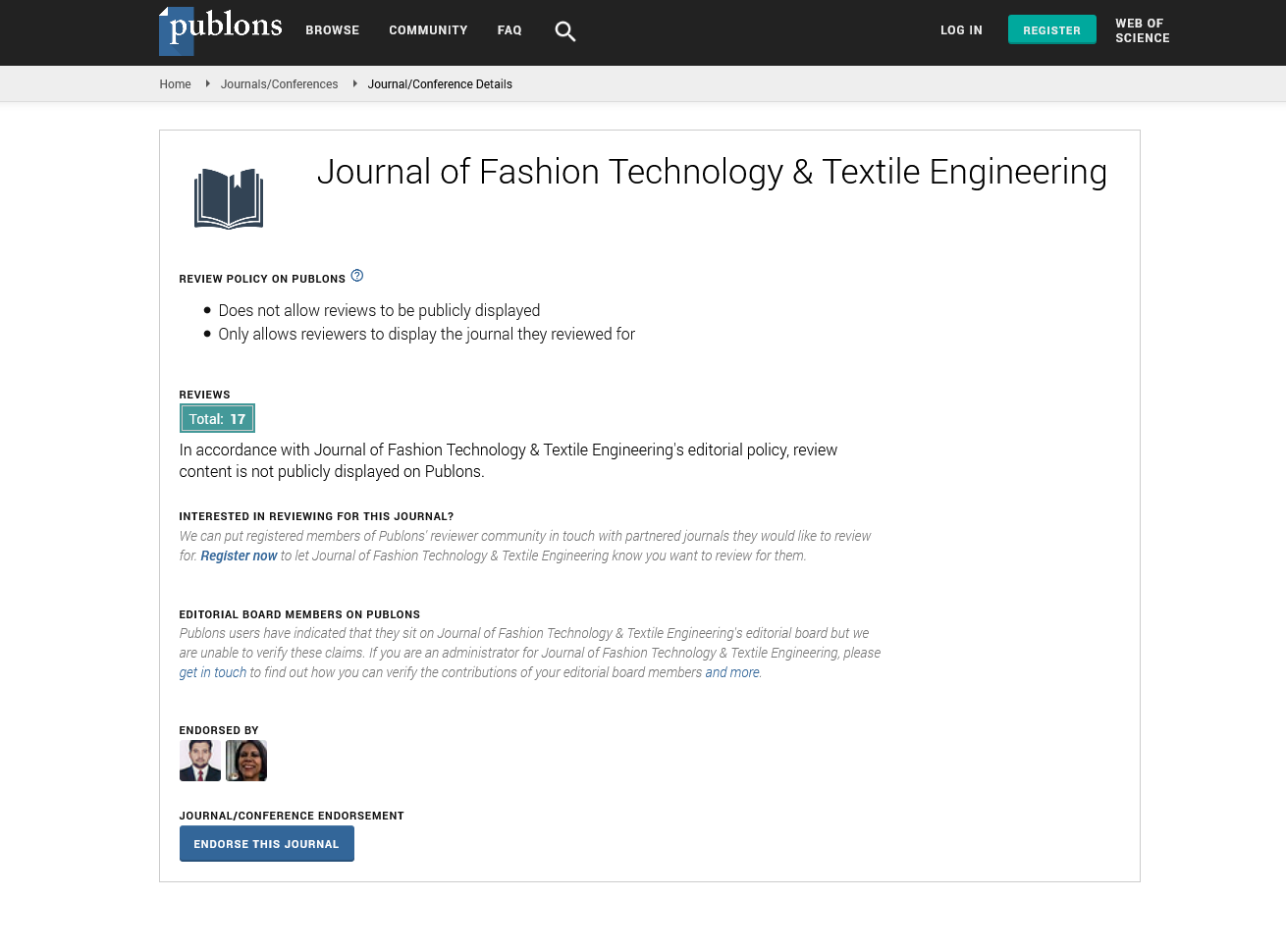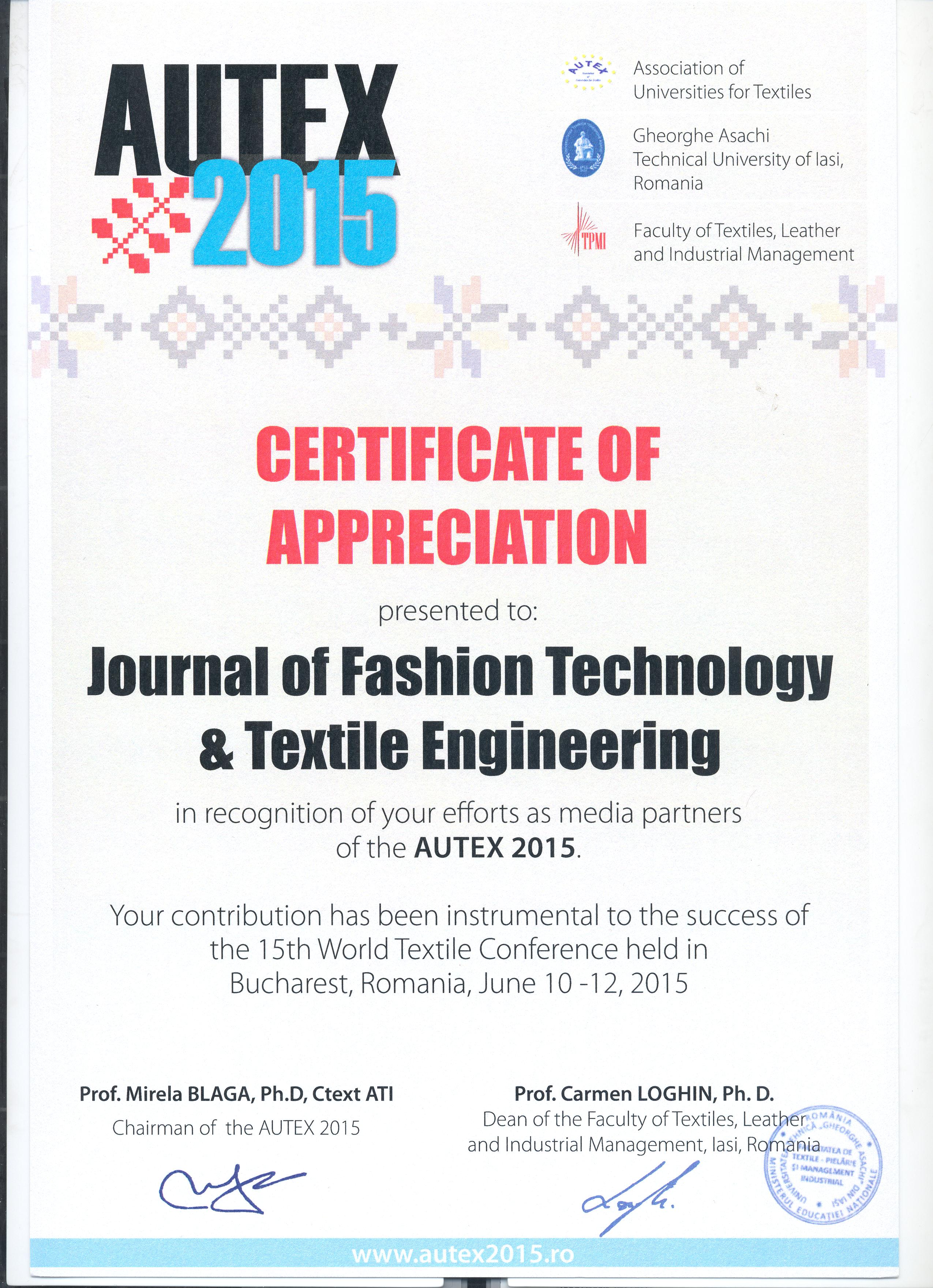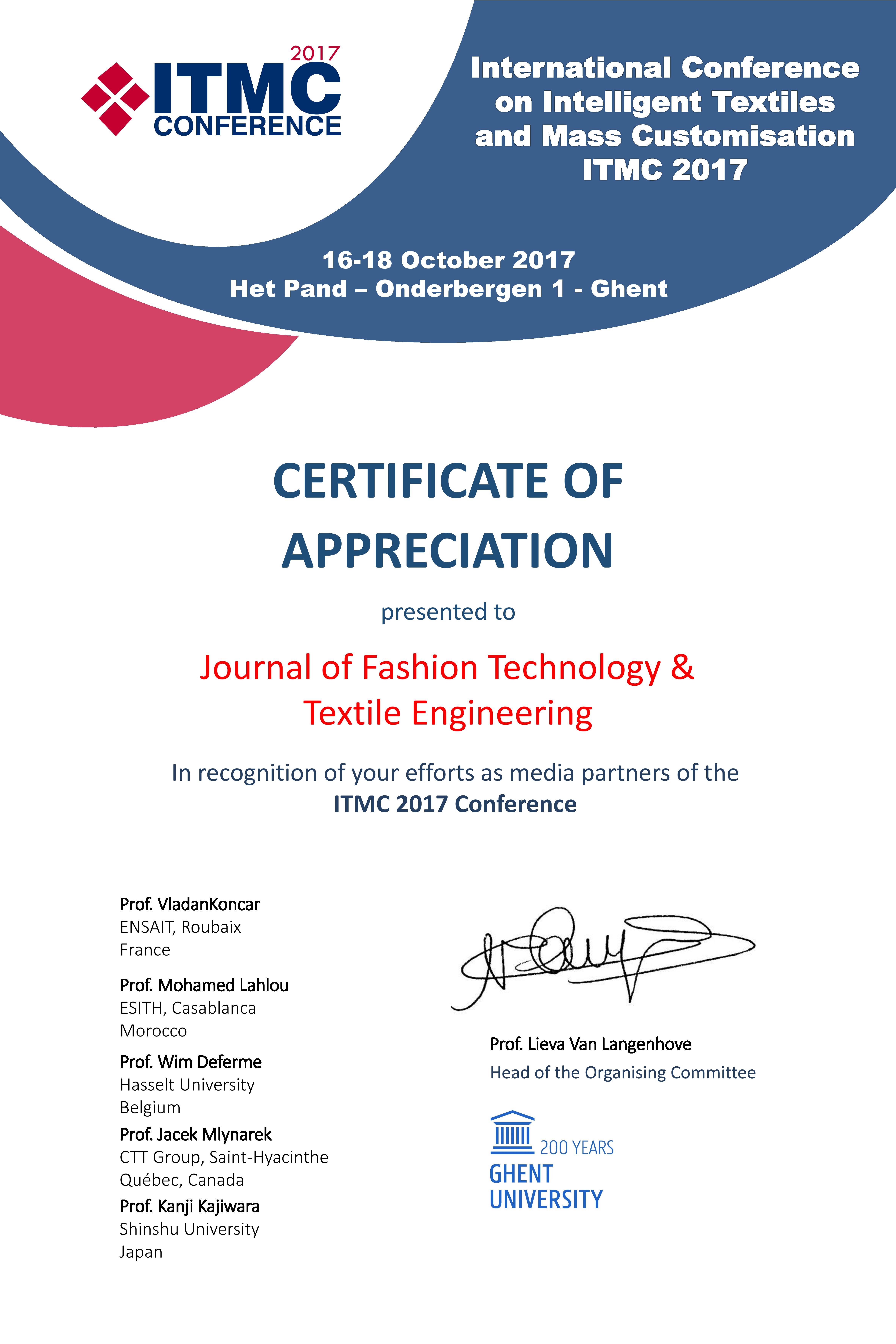Short Communication, J Fashion Technol Textile Vol: 12 Issue: 6
Environmental Impact of Fast Fashion: Analyzing Its Contribution to Climate Change and Sustainability Challenges
Harrison Grainger*
1Department of Fashion Technology, University of Bangladesh, Dhaka, Bangladesh
*Corresponding Author: Harrison Grainger,
Department of Fashion Technology,
University of Bangladesh, Dhaka, Bangladesh
E-mail: harrison-grainger34@gmail.com
Received date: 26 November, 2024, Manuscript No. JFTTE-24-155269;
Editor assigned date: 28 November, 2024, PreQC No. JFTTE-24-155269 (PQ);
Reviewed date: 12 December, 2024, QC No. JFTTE-24-155269;
Revised date: 20 December, 2024, Manuscript No. JFTTE-24-155269 (R);
Published date: 27 December, 2024, DOI: 10.4172/2329-9568.1000391.
Citation: Grainger H (2024) Environmental Impact of Fast Fashion: Analyzing its Contribution to Climate Change and Sustainability Challenges. J Fashion Technol Textile 12:6.
Description
The impact of fast fashion on climate change is significant and multifaceted, contributing to environmental degradation in several ways. Fast fashion refers to the rapid production of inexpensive, trendy clothing that encourages consumers to frequently purchase new items, often at the expense of quality and durability. The consumers affordable and fashionable clothing, the production and consumption model has serious consequences for the planet. One of the primary environmental impacts of fast fashion is its large carbon footprint [1,2]. The textile industry is one of the largest industrial contributors to greenhouse gas emissions, responsible for an estimated 10% of global carbon emissions. The production of garments involves energyintensive processes, from growing cotton and other raw materials to manufacturing and transportation. Many fast fashion brands depend on cheap, energy-intensive production practices in countries with less severe environmental regulations, intensifying the industry's carbon emissions [3].
Fast fashion depends on the mass production of synthetic fibers, such as polyester and natural fibers like cotton, both of which require vast amounts of water. For instance, producing one cotton shirt can use up to 2,700 liters of water, the amount an average person drinks in two and a half years. In addition, the textile dyeing process uses enormous quantities of water and chemicals that frequently end up polluting rivers and other water bodies, further harming ecosystems and communities [4-6]. The fast fashion industry's overreliance on synthetic fibers, particularly polyester, also contributes to the climate crisis. Polyester is derived from petroleum-based resources and requires significant energy to produce. Moreover, when garments made from polyester are washed, they shed microplastics that pollute oceans and waterways, causing long-term harm to marine life and ecosystems [7].
Fast fashion encourages a culture of disposability, with garments often worn only a few times before being discarded. As a result, large quantities of clothing end up in landfills. The average consumer discards around 60% of their clothing within a year of purchase. This waste, which often includes non-biodegradable synthetic materials, contributes to the accumulation of textile waste in landfills, where it takes decades to decompose and releases harmful chemicals into the soil and air. The rapid turnover of clothing collections also leads to a culture of overproduction [8]. To keep up with demand, manufacturers produce clothes in large volumes, often at the cost of sustainability. This overproduction leads to excessive energy consumption, resource depletion and waste, exacerbating the climate crisis. Efforts to explain the climate impact of fast fashion include promoting sustainable practices in the industry, such as using eco-friendly materials, adopting energy-efficient production methods and encouraging clothing recycling and upcycling. Brands are beginning to implement circular fashion models, which aim to reduce waste and extend the lifespan of garments [9,10].
Conclusion
In conclusion, the fast fashion industry plays a significant role in accelerating climate change through excessive carbon emissions, water consumption, waste generation and reliance on unsustainable materials. While efforts to adopt sustainable practices are emerging, the industry's overall environmental outline remains substantial. These issues require a collective effort from both producers and consumers to prioritize eco-friendly production, responsible consumption and circular fashion models to generate a more sustainable and environmentally conscious fashion industry. However, the full impact of fast fashion on climate change requires systemic changes in both production and consumption patterns, with a shift toward sustainable, slow fashion practices and a reduction in overconsumption.
References
- Yalcin-Enis I, Kucukali-Ozturk M, Sezgin H (2019) Risks and management of textile waste. Nano Biotech Environ App 29-53.
- Rapsikevičienė J, Gurauskienė I, Jučienė A (2019) Model of industrial textile waste management. Environ Eng Res 75(1):43-55.
- Wojnowska-Baryła I, Bernat K, Zaborowska M (2022) Strategies of recovery and organic recycling used in textile waste management. Int J Environ Res Public Health 19(10):5859.
- Pervez MN, Mondal MI, Cai Y, Zhao Y, Naddeo V (2021) Textile waste management and environmental concerns. InFun Nat Fibre Text 719-739.
- Weber S, Lynes J, Young SB (2017) Fashion interest as a driver for consumer textile waste management: Reuse, recycle or disposal. Int J Consum Stud 41(2):207-15.
- Domina T, Koch K (1997) The textile waste lifecycle. Text Res J 15(2):96-102.
- Jordeva S, Tomovska E, Zhezhova S, Golomeova S, Dimitrijeva V (2020) Textile waste management practices. Contem Trends Innov Text.
- Li X, Wang L, Ding X (2021) Textile supply chain waste management in China. J Clean Prod 289:125147.
- Tang KH (2023) State of the art in textile waste management: A review. Text 3(4):454-67.
- Wren B (2022) Sustainable supply chain management in the fast fashion Industry: A comparative study of current efforts and best practices to address the climate crisis. Clean Logist Supply Chain 4:100032.
 Spanish
Spanish  Chinese
Chinese  Russian
Russian  German
German  French
French  Japanese
Japanese  Portuguese
Portuguese  Hindi
Hindi 


